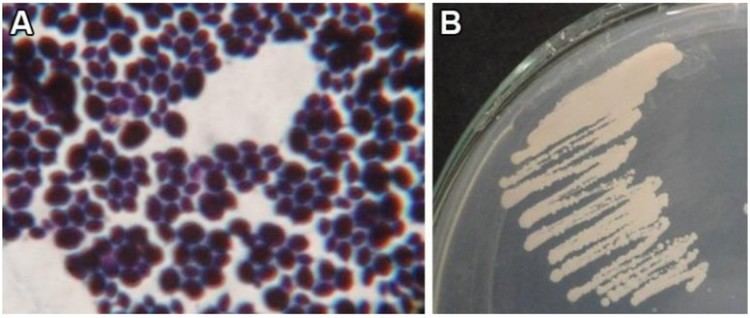Kingdom Fungi Family Debaryomycetaceae | ||
 | ||
Similar Candida lusitaniae, Candida parapsilosis, Candida glabrata, Issatchenkia orientalis, Rhodotorula | ||
Candida auris commensal pathogen friend or foe infection prevention and control aspects
Candida auris is a species of fungus that grows as yeast and is ascomycetous. It is one of the few species of the Candida genus that cause the infection candidiasis in humans. Candidiasis is often acquired in the hospital when human immune systems are weakened. C. auris causes fungemia, yielding candidemia (systemic candidiasis). It has attracted clinical attention because of its multidrug resistance, and some cases of infection have been misattributed to other Candida species. The species was first described in 2009. A brief outline of its clinical relevance as of 2016, understandable by general audiences, was published by the Center for Infectious Disease Research and Policy at the University of Minnesota. The name Candida auris comes from the Latin word for ear, auris, under the genus Candida.
Contents
- Candida auris commensal pathogen friend or foe infection prevention and control aspects
- Genome
- Epidemiology
- Morphology
- References

Genome
Several draft genomes from whole genome sequencing have been published.
Epidemiology

C. auris was originally isolated from the ear canal of a patient at a hospital in Japan. The fungus then spread to other continents, and a multi-drug-resistant strain was eventually discovered in Southeast Asian countries in early 2016. Chatterjee et al. (2015) stated, "Its actual global distribution remains obscure as the current commercial methods of clinical diagnosis misidentify it as C. haemulonii." C. auris was first described in Europe in October 2016 in a cardio-thoracic hospital located in London.
Morphology
C. auris cells are ellipsoid in shape and form smooth, shiny, whitish-gray, viscous colonies on growth media.


